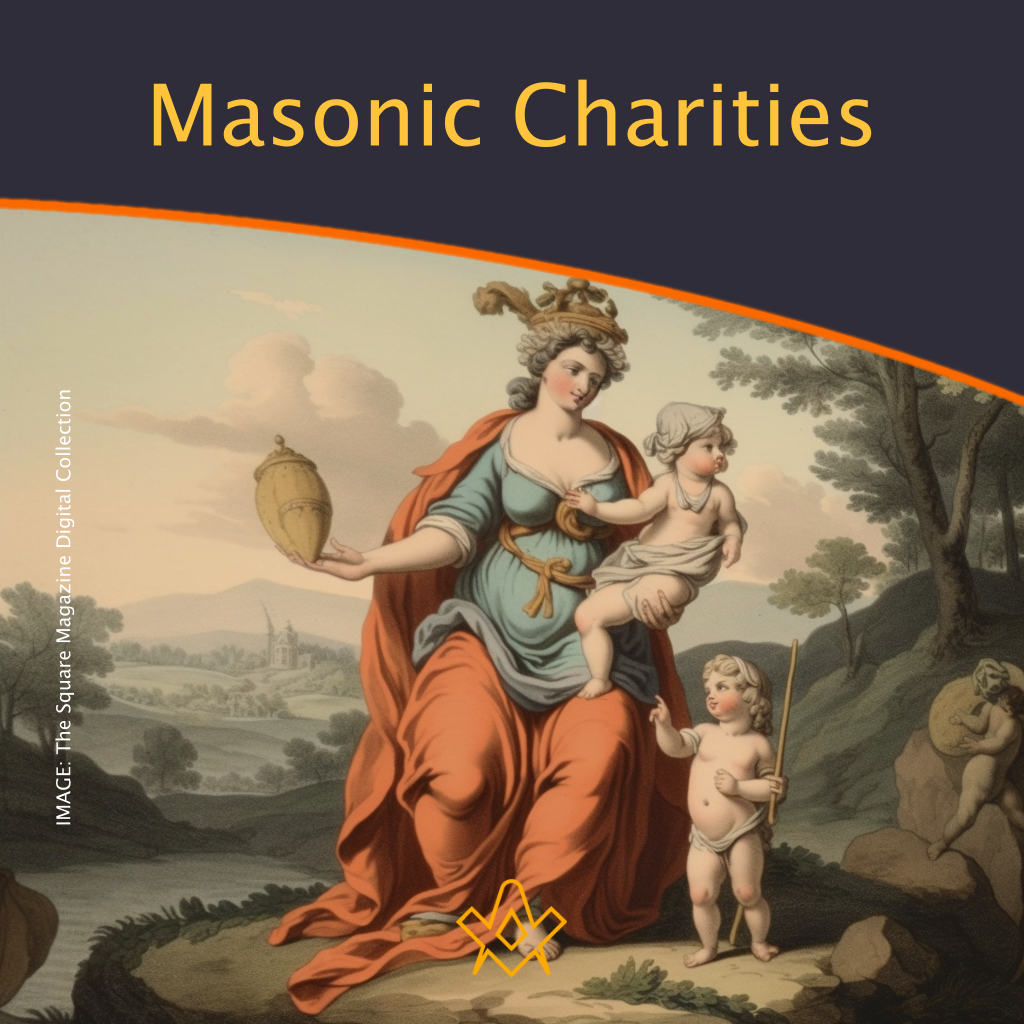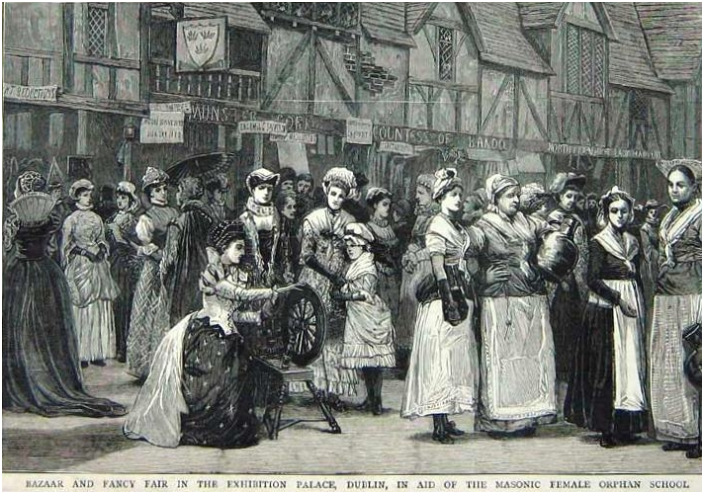Introduction and history of Masonic philanthropy – the charities and benevolent institutions from the 1700s to the 21st century
Part 1 – Charity begins at home
CHARITY is the chief of every social virtue, and the distinguishing characteristic of Masons. This virtue includes a supreme degree of love to the great Creator and Governor of the Universe, and an unlimited affection to the beings of his creation, of all characters, and of every denomination. This last duty is forcibly inculcated by the example of the Deity himself, who liberally dispenses his beneficence to unnumbered worlds.
– Ahimon Rezon
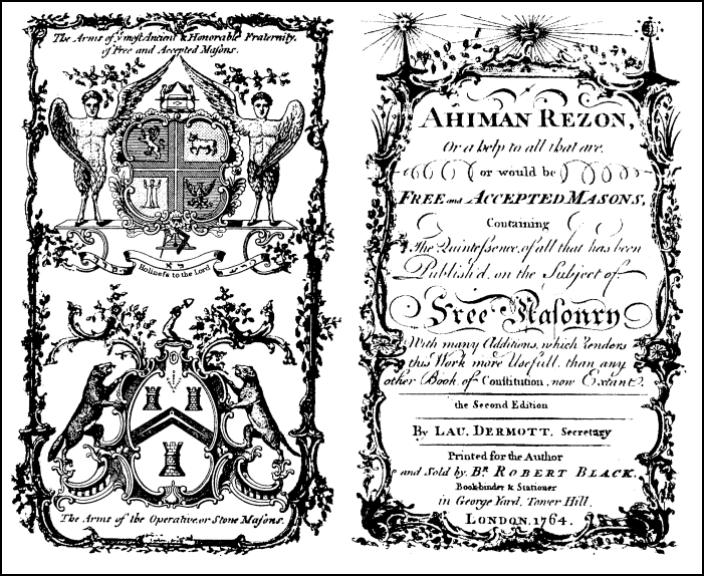
Ahimon Rezon
IMAGE LINKED: wikimedia Attribution 4.0 International (CC BY 4.0)
Masonic charitable organisations have a long and rich history that span several centuries. Freemasonry, an ancient fraternity with roots dating back to the late 16th and early 17th centuries, has been involved in charitable work since its inception.
Charity is one of the main tenets of Freemasonry – it encompasses both “brotherly love” and “relief”, for “charity must also begin at home”.
Since its foundation as an organisation, Freemasonry has embodied these virtues and every member has contributed to the welfare of brethren and the wider community.
The “Ahiman Rezon”, a foundational text for Freemasons, describes charity as the “chief of every social virtue” and a “distinguishing characteristic of Masons”.
This virtue embodies a supreme love for the Creator and an unrestricted affection for all beings in the universe, regardless of their character or denomination.
The text portrays charity as a force that transcends national boundaries and socioeconomic statuses. It emphasizes that all humans, regardless of their circumstances, are appropriate recipients of charity. This is due to the shared vulnerabilities inherent in human nature, such as susceptibility to danger, misfortune, and varying states of health and wealth.
The Freemasons are therefore encouraged to empathize with others’ suffering, aiming to alleviate distress and restore peace. This act of compassion is said to elicit a deep sense of satisfaction, outshining any other pleasure the mind can enjoy.
In a metaphorical depiction, the “Ahiman Rezon” likens charity to a ladder connecting earth to heaven. This ladder symbolizes the virtues of Faith, Hope, and Charity, with Charity being the most significant. Charity, it argues, extends beyond the grave and into the boundless realms of eternity, underscoring its enduring nature.
One passage describes charity as the “brightest gem” that can adorn the Masonic profession. The text calls for benevolence, forgiveness, and a rejection of malice or revenge.
It identifies the objects of Masonic charity as those with merit and virtue in distress, those incapable of extricating themselves from misfortune, industrious individuals fallen into ruin due to unavoidable circumstances, widows left without the support of their husbands, orphans, and the elderly.
In another passage, charity is represented as a vital rung on the theological ladder symbolizing the Masonic virtues. This ladder, based on Jacob’s vision in the Bible, connects the earth with heaven.
It is composed of many moral virtues, with Faith, Hope, and Charity being principal among them. The text stresses that a Mason who embodies charity in its fullest sense can justly be considered as having attained the peak of Masonic wisdom.
Early Philanthropic Activities in the Early Years of Freemasonry
In the early years of Freemasonry – and indeed stemming from it roots in the guilds of stone masons – charitable activities were primarily focused on providing financial assistance to Masonic members and their families during times of hardship.
Similar to the medieval Guilds, Masonic lodges established relief funds to support their brethren, offering assistance with medical expenses, funeral costs, and other forms of aid.
This philanthropy extended to the greater community and is a prominent feature of the modern Masonic Charitable organisations.
Freemasons took a significant step forward by establishing schools, hospitals and care homes dedicated to providing medical care to both Masonic members and the wider community.
William Preston in “Illustrations of Freemasonry” stated that:
To relieve the distressed is a duty incumbent on all men, but particularly on Freemasons, who are linked together by an indissoluble chain of sincere affection. To soothe the unhappy, to sympathise with their misfortunes, to compassionate their miseries, and to restore their troubled minds, is the great aim we have in view.
Although charity is a cornerstone of Masonic values in all areas of the world, we start our series exploring the origins of the first Masonic charitable organisations in Great Britain in the early years of Freemasonry.
Timeline of Masonic Charitable Organisations in the UK
1724 – The Premier Grand Lodge establishes a Charity Committee to “deliberate petitions and grant assistance” and designed for the ‘Relief of distress’d Brethren’.
1788 – The Royal Masonic Institution for Girls (later became the Royal Masonic School for Girls). A committee of Chevalier Bartholomew Ruspini and nine other Freemasons met at the Freemasons’ Tavern in Great Queen Street to plan the details of a charitable institution for the daughters of Masons who were struggling financially. In the following year, a house was opened in Somers Place East London, giving place to 15 girls. Later the house became too small to house the steady increase in pupils, and in 1790, a further house was found. In 1853 the school moved again to bigger premises, then in 1918 the junior girls moved to a new junior school in Weybridge, Surrey. The final move was from Weybridge to the current location in Rickmansworth, Hertfordshire. In 1978, the school opened to girls beyond the daughters of Freemasons.
1792 – The Masonic Female Orphan School of Ireland was instituted in Dublin, Ireland, the aim of maintaining the daughters of indigent Freemasons, unable through death, illness, or incapacitation to support their families.
Masonic_orphans_school_bazaar_Dublin.jpg#/media/File:Masonic_orphans_school_bazaar_Dublin
IMAGE LINKED: wikimedia Attribution 4.0 International (CC BY 4.0)
1798 – The Royal Masonic Institution for Boys (from 1798, amalgamated 1852) served the same purpose as the Royal Masonic Institution for Girls – to house, clothe and educate. In 1857, a dedicated school was set up for the sons of Freemasons in Wood Green, London. In 1903, The Royal Masonic School for Boys was instituted in Bushey, Hertfordshire. Due to declining numbers, the school finally closed in 1977.
1842 – The Royal Masonic Benevolent Institution Care Company founded by Prince Augustus Frederick, Duke of Sussex and instigated when United Grand Lodge of England inaugurated the Royal Masonic Benevolent Annuity Fund for men in 1842 and the Female Annuity Fund in 1849. The following year, 1850, the first Home was opened in East Croydon named the “Asylum for Worthy, Aged and Decayed Freemasons”, and The Royal Masonic Benevolent Institution (RMBI) was established. This main charity was instigated and founded by several prominent Freemasons including Dr Robert Crucefix, and formally established when the United Grand Lodge of England inaugurated the Royal Masonic Benevolent Annuity Fund for men. This led to other Annuity Funds and charities, including the Widows Annuity Fund, and the “Asylum for Worthy, Aged and Decayed Freemasons” (founded by Dr Robert Crucefix). The RMBI also oversaw the funding of the Girl’s and Boy’s Schools.
1849 – Female/Widows Annuity Fund established (instigated by Dr Crucefix)
1850 – The “Asylum for Worthy, Aged and Decayed Freemasons” is created – a care home in East Croydon. The home remained in Croydon for over 100 years until 1955, when, due to the need for bigger premises, it was relocated to Harewood Court in Hove, East Sussex. In the early 1960s, provision was extended to non-Masons and, between 1960 and 1985, a further 14 homes were set up or acquired around England and Wales. Four more premises have since been opened, bringing the number of homes run by RMBI Care Co. to 18.
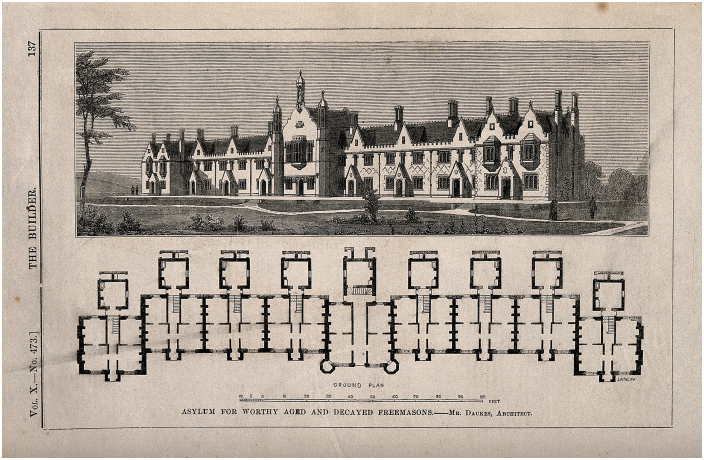
Asylum for Worthy and Decayed Freemasons, Croydon, England: perspective view and floor plan. Wood engraving by C.D. Laing, 1852.
IMAGE LINKED: wellcome collection Attribution 4.0 International (CC BY 4.0)
1867 – Masonic Boys School Dublin. Following the earlier establishment of the Masonic Female Orphan School of Ireland, the establishment of a boys school was decided upon at a meeting in Freemason’s Hall on Molesworth Street on the 16 April 1867. It was directly supported by the Brethren of the Masonic Order and was in existence from 1867 until 1981.
1914-1918 – Freemasons’ War Hospital was opened by London Freemasons with support from lodges around England during the First World War. It was sited in Fulham Road, London, in the premises of the former Chelsea Hospital for Women, and treated over 4,000 servicemen by the end of the war.
1920 – What was the Freemasons’ War Hospital became the Freemason’s Hospital and Nursing Home, but soon outgrew its premises.
1933 – The Royal Masonic Hospital was opened in Ravenscourt Park, in Hammersmith, London, by King George V and Queen Mary. The king had given permission for the former Freemasons’ Hospital and Nursing Home to be renamed. The hospital treated over 8,600 servicemen during the Second World War and remained independent when the National Health Service was founded in 1948. The hospital began accepting paying non-Masons as patients in 1978, but was closed due to ongoing financial issues in 1994.
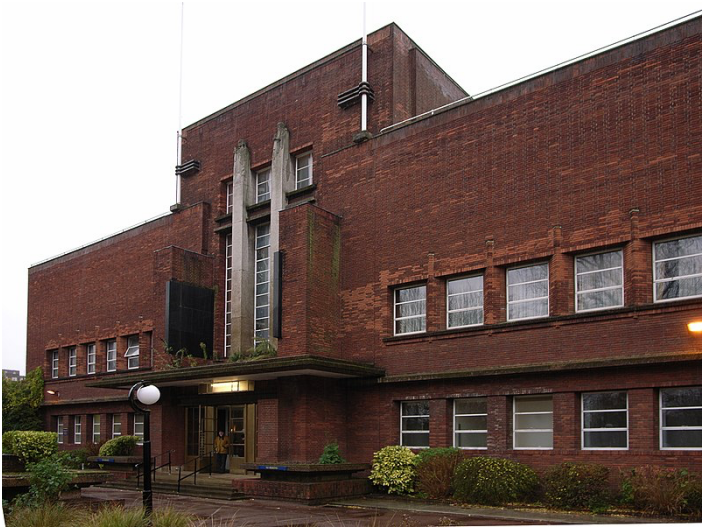
The former Royal Masonic Hospital building photographed in 2008. /h5>
IMAGE LINKED: Copyright: Steve Cadman, steve@stevecadman.me.uk, Creative Commons Attribution-Sharealike v2.0
1980 – The Freemasons’ Grand Charity is established.
1990 – The Masonic Samaritans Fund is founded to offer healthcare for Freemasons and their families.
2008 – The Central Masonic Charities move their offices to Freemasons’ Hall in London
2016 – The Masonic Charitable Foundation (MCF) is established – amalgamating The Freemasons’ Grand Charity, The Royal Masonic Trust for Girls and Boys, The Masonic Samaritan Fund and The Royal Masonic Benevolent Institution (RMBI). The MCF provides support not only to Freemasons and their families but also to the wider community.
Some notable Masonic philanthropists and founders of Masonic charitable organisations
Chevalier Bartholomew Ruspini (1728-1813) was an Italian-born British surgeon-dentist and philanthropist in the 18th century. Having settled in England in the 1750s, Italian dentist Ruspini joined the Freemasons.
He transformed dental care, providing free tooth powder and mouthwash to poor Londoners. In fact, Ruspini used his own styptic, a medicine to stop bleeding, to save the Grand Master’s life.
That Grand Master happened to be the Prince of Wales, who in turn made Ruspini his official Surgeon-Dentist.
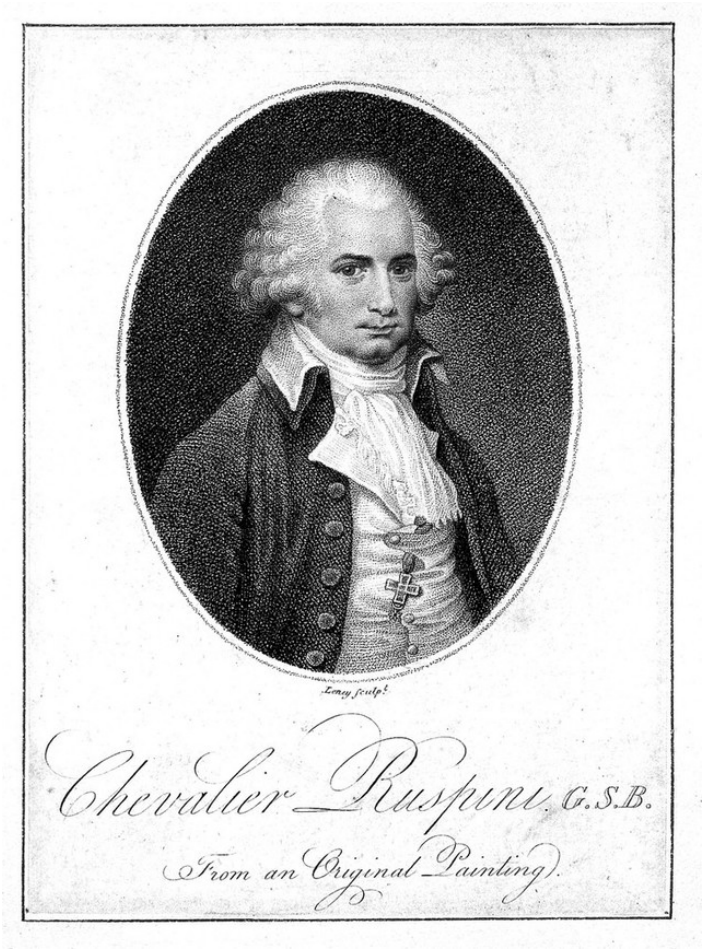
Bartholomew Ruspini. Stipple engraving by W.S. Leney.
IMAGE LINKED: wellcome collection Attribution 4.0 International (CC BY 4.0)
Dr Robert T. Crucefix MD. (1797-1850) was instigator of the Royal Masonic Benevolent Institution (RMBI), founder of the Asylum for Worthy, Aged and Decayed Freemasons, and the Widow’s Annuity Fund.
Doctor Crucefix was initiated into Freemasonry in 1829, and during the greater part of his life discharged the duties of important offices in the Grand Lodge of England, of which he was a Junior Grand Deacon in 1836, and in several subordinate Lodges, Chapters, and Encampments.
He was an earnest promoter of all the Masonic charities of England. In 1834 he established the Freemasons Quarterly Review, and continued to edit it for six years, during which period he contributed many valuable articles to its pages.
![]()
In Faith and Hope the World will disagree,
But all Mankind’s concerned in Charity
– Pope
Footnote
References
Sources:
Wikipedia – under the Creative Commons Licence
https://en.wikipedia.org/wiki/Royal_Masonic_Benevolent_Institution
https://en.wikipedia.org/wiki/The_Royal_Masonic_School_for_Girls
https://en.wikipedia.org/wiki/Masonic_Female_Orphan_School_of_Ireland
The Masonic Charitable Foundation
Further Reading:
Ahiman Rezon
https://www.amazon.com/Ahiman-Rezon-Excellency-Institution-Free-Masonry/dp/1385838221
Article by: Philippa Lee. Editor

Philippa Lee (writes as Philippa Faulks) is the author of eight books, an editor and researcher.
Philippa was initiated into the Honourable Fraternity of Ancient Freemasons (HFAF) in 2014.
Her specialism is ancient Egypt, Freemasonry, comparative religions and social history. She has several books in progress on the subject of ancient and modern Egypt. Selection of Books Online at Amazon
masonic knowledge
to be a better citizen of the world
share the square with two brothers

click image to open email app on mobile device



